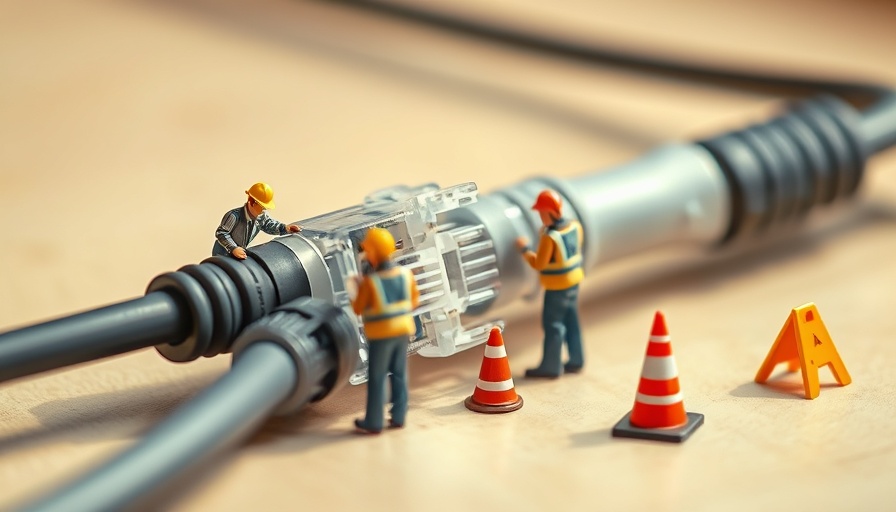
Why a Strong Internet Connection Matters Today
In a world increasingly reliant on connectivity, a strong and stable internet connection has become essential. With remote work, streaming, online gaming, and smart home technologies dominating our lives, even slight disruptions can lead to significant inconvenience. Understanding how to troubleshoot these issues can save you from unnecessary frustration and downtime.
Start with the Basics: Quick Troubleshooting Steps
Before reaching out to your Internet Service Provider (ISP), there are several common troubleshooting steps you can take to diagnose internet issues. Here we present straightforward actions to evaluate your connection:
- Restart Your Equipment: Begin with a simple restart of your modem and router. Unplug them for about 60 seconds before plugging them back in. This often clears minor glitches that could cause connectivity issues.
- Check the Status Lights: Your modem and router typically have LED indicators that can tell you about the status of your connection. If the internet light is off or red, you may have a signal issue.
- Test on Multiple Devices: Check if the problem exists on all your devices or just one. If another device connects smoothly, the problem could be isolated to your first device.
- Detect Service Outages: Before further troubleshooting, ensure that there are no outages reported in your area. Use services like Downdetector to see if others are affected.
Diagnosing Your Connection: Is it Wi-Fi or ISP Issues?
Understanding whether the issue lies with your Wi-Fi signal or your ISP is crucial. If you can access the internet via an Ethernet cable directly to your modem but not through Wi-Fi, you likely have a Wi-Fi problem. Here are steps to diagnose:
- Wired vs. Wireless: If a direct Ethernet connection works, the issue may be related to Wi-Fi strength or interference. Conversely, losing connectivity on all devices suggests an ISP issue.
- Check Cables: Ensure all of your cables are securely connected and undamaged. Loose connections can lead to intermittent connectivity problems.
- Move the Router: Often, merely repositioning your router can improve the Wi-Fi signal throughout your space. Aim for a central location, elevated and away from other electronic devices.
Common Conflicts: Bandwidth and Interference
Sometimes your internet connection may slow down due to bandwidth overuse or interference. Here’s how to manage those issues:
- Check for Bandwidth Hogs: Applications like video conferencing tools or games can consume excessive bandwidth. Use Task Manager on Windows or Activity Monitor on macOS to identify high-usage applications.
- Scan for Viruses: Malware can impact your internet speed. Run antivirus scans to ensure your devices are free from harmful software that may be affecting performance.
- Channel Congestion: If you live in a densely populated area, your Wi-Fi network may experience interference from neighboring networks. Changing to a less crowded channel in your router settings can resolve this issue.
When to Contact Your ISP
If all else fails, it might be time to reach out to your ISP. They can often perform diagnostics from their side to determine whether the problem is more complex and related to their infrastructure. Be prepared to share the steps you have already taken to troubleshoot the connection. Remember, if you frequently experience slow speeds or interruptions, it may be worth considering a different provider or upgrading your internet plan.
In the technology-driven world we live in, a reliable internet connection isn’t just a luxury—it's a necessity. By familiarizing yourself with these troubleshooting techniques, you can take charge of your internet issues and minimize disruption to your daily routine.
 Add Row
Add Row  Add
Add 




Write A Comment